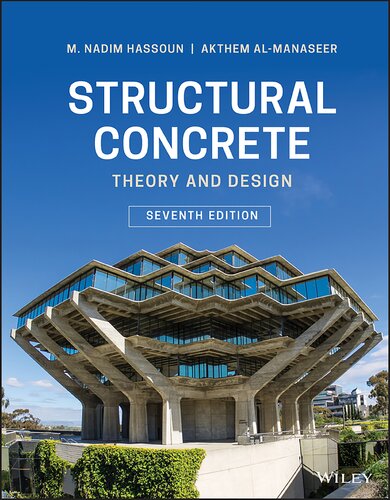

Most ebook files are in PDF format, so you can easily read them using various software such as Foxit Reader or directly on the Google Chrome browser.
Some ebook files are released by publishers in other formats such as .awz, .mobi, .epub, .fb2, etc. You may need to install specific software to read these formats on mobile/PC, such as Calibre.
Please read the tutorial at this link: https://ebookbell.com/faq
We offer FREE conversion to the popular formats you request; however, this may take some time. Therefore, right after payment, please email us, and we will try to provide the service as quickly as possible.
For some exceptional file formats or broken links (if any), please refrain from opening any disputes. Instead, email us first, and we will try to assist within a maximum of 6 hours.
EbookBell Team

4.7
26 reviewsThe leading structural concrete design reference for over two decades—updated to reflect the latest ACI 318-19 code
A go-to resource for structural engineering students and professionals for over twenty years, this newly updated text on concrete structural design and analysis reflects the most recent ACI 318-19 code. It emphasizes student comprehension by presenting design methods alongside relevant codes and standards. It also offers numerous examples (presented using SI units and US-SI conversion factors) and practice problems to guide students through the analysis and design of each type of structural member.
New to Structural Concrete: Theory and Design, Seventh Edition are code provisions for transverse reinforcement and shear in wide beams, hanger reinforcement, and bi-directional interaction of one-way shear. This edition also includes the latest information on two-way shear strength, ordinary walls, seismic loads, reinforcement detailing and analysis, and materials requirements. This book covers the historical background of structural concrete; advantages and disadvantages; codes and practice; and design philosophy and concepts. It then launches into a discussion of the properties of reinforced concrete, and continues with chapters on flexural analysis and design; deflection and control of cracking; development length of reinforcing bars; designing with the strut-and-tie method; one-way slabs; axially loaded columns; and more.
Structural Concrete: Theory and Design, Seventh Edition is an excellent text for undergraduate and graduate students in civil and structural engineering programs. It will also benefit concrete designers, structural engineers, and civil engineers focused on structures.